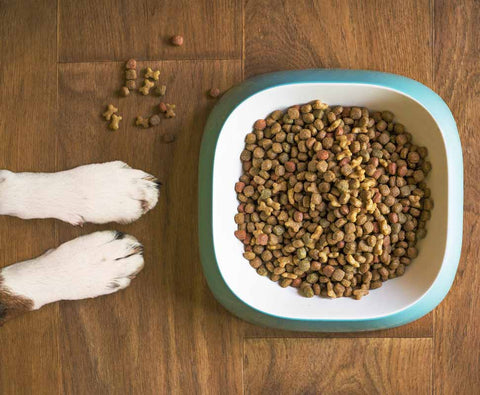

Cushing's disease, a disorder affecting a dog's endocrine system, is most commonly seen in middle-aged and older dogs. The condition is characterized by an overproduction of cortisol, a hormone that plays various roles in the body including the regulation of metabolism and the immune response.
Early detection of this disease is crucial for effective management and to improve your dog's quality of life. This article aims to help you identify the early signs of Cushing's disease in your furry friend.
What Are the First Signs of Cushing’s Syndrome in Dogs?
- Increased thirst and urination
- Excessive panting
- Pot bellied-appearance or weight gain
- Thinning skin and hair loss
- Unusually low energy levels
- Unexplained bruising or wounds
Increased Thirst and Urination
One of the first symptoms you might notice is an increase in your dog's thirst and urination. You may find yourself refilling the water bowl more often or having to take more frequent trips outside. Some dogs may even begin to have accidents in the house.
Although increased thirst and urination can be signs of other issues like diabetes, they are also common indicators of Cushing's disease.
Excessive Panting
Dogs pant for various reasons, such as cooling down after exercise. However, if you notice that your dog is panting excessively even when at rest, it may be a cause for concern. Excessive panting without a clear reason, such as heat or exercise, can be an early sign of Cushing's disease.
Weight Gain and Pot-bellied Appearance
A sudden change in your dog's weight or physique can be another clue. Cushing's disease often leads to a redistribution of body fat, resulting in a pot-bellied appearance. This "potbelly" is not generally accompanied by an increase in appetite, making it different from weight gain due to overeating.
See Our Line of Natural Cushing's Treatments for Dogs
Thinning Skin and Hair Loss
Your dog's coat is a good indicator of their overall health. If you notice thinning of the skin or loss of hair in your dog, particularly symmetrically on both sides of the body, it could be a sign of Cushing's. The disease affects the skin's ability to produce hair and can result in bald patches.
Low Energy Levels and Lethargy
While it’s natural for dogs to have less energy as they age, a sudden or significant decrease in activity could be a red flag. Dogs with Cushing's disease often show signs of lethargy, weakness, or low energy levels. If your dog seems less interested in play, walks, or other activities they usually enjoy, consider talking to your vet.
Unexplained Bruising or Wounds
Cushing's disease can lead to thinning of the skin and a decrease in its ability to heal itself. This may result in unexplained bruises, cuts, or sores that don't seem to heal as quickly as they should. These symptoms often get dismissed as mere aging signs, but they can indicate early-stage Cushing's disease.
Conclusion
Recognizing the early signs of Cushing's disease in your dog allows you to seek veterinary care sooner, increasing the chances of effective management and treatment. Many of these symptoms can also be signs of other conditions, so a proper diagnosis is essential. If you observe any combination of these symptoms, consult your veterinarian for a thorough examination and appropriate tests and bloodwork for Canine Cushing's.
By being attentive to these early signs, you are taking an essential step in safeguarding your dog's health and well-being. Remember, early detection is key to effective treatment and can make a significant difference in your dog's quality of life with Cushing's.



